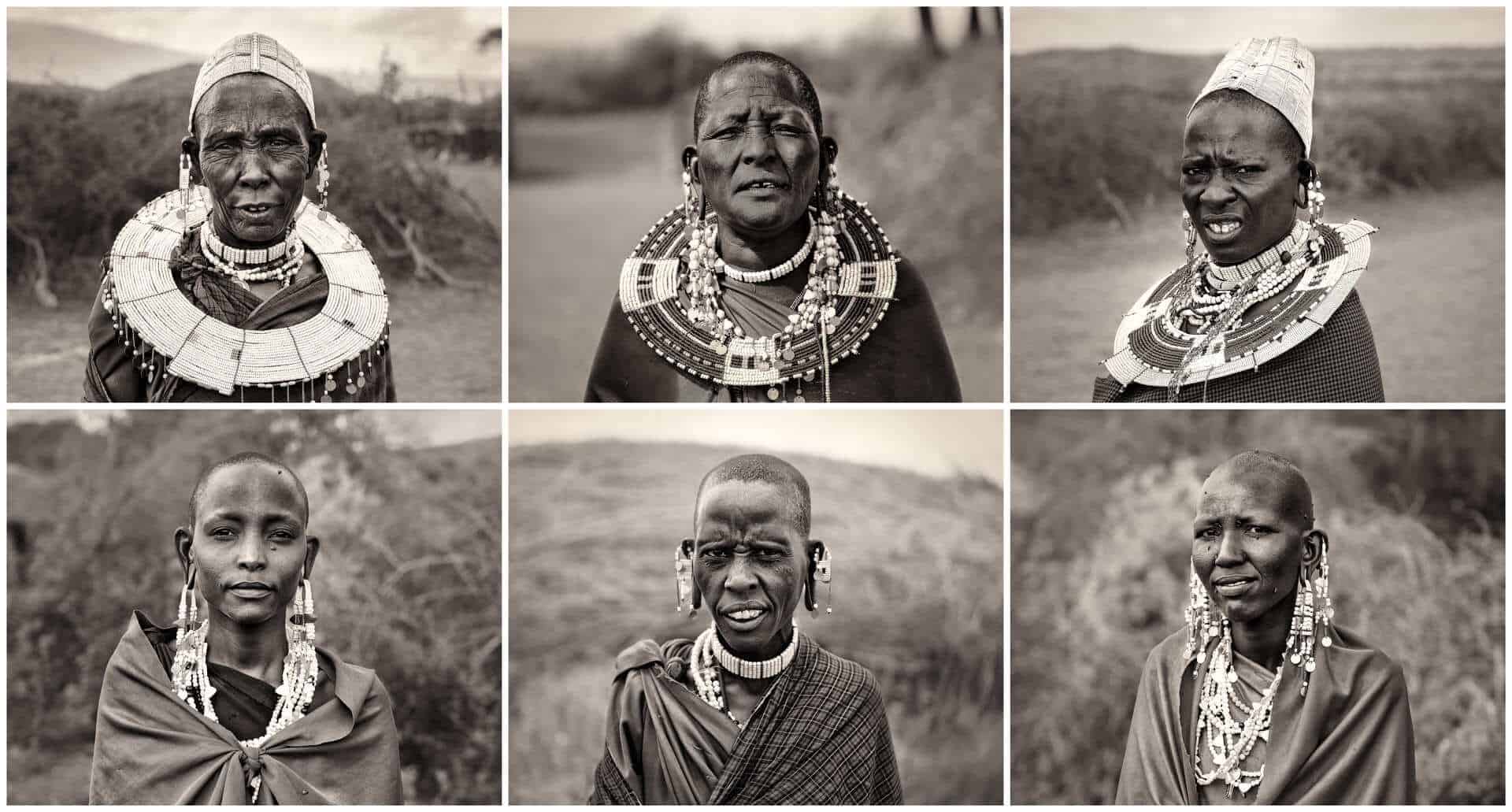Maasai Women
I visited Tanzania In February 2019 where I met a few of the Maasai community and took the opportunity to capture their portraits. I made special efforts to connect with the indigenous population and was very fortunate to create these extraordinary portraits. These are not candid snapshots, but carefully composed portraits that honour the Maasai people. I did not plan to create these portraits but was overwhelmed when I first saw members of the tribe.
Maasai people endeavour to hold onto their traditional way of life and maintain a strongly patriarchal society, which sees elder men deciding on most major matters for each Maasai group. My first encounter with the tribe was at a lodge located near the Ngorongoro Crater, which is a national reserve for wildlife animals where I was touring and photographing the wildlife. The Maasai were working at the lodge when I approached them to ask if he could create their portrait.
One of the men spoke English, which helped me make contact with the others. I only had a brief time as they were busy working and I was a member of the tour group, focusing on wildlife photography. I immediately saw the potential to document this culture and seized every opportunity — early morning or late afternoon — to make contact with the local community and document them on every stop of our journey across Tanzania.
I would ask permission from each person I wanted to photograph and made an effort to create rapport with them. I asked a local tour guide to teach me how to say “My name is Ilan. What is your name?” in Maa (the language of the Maasai). I would then repeat this on every encounter and the Maasai people opened up, allowing their portrait to be created.
I made a point of connecting with a few of the younger generation Maasai who had smartphones with WhatsApp. After completing the series, I sent them the link to the album and asked them to show it in the village. They were so proud and delighted with the outcome. They said the album shows that I really love the people.
When finalising the series, I converted Maasai People into film-like monochrome. The heightening of contrast helps to create a sense of drama, lending to the series a unifying style that emulates analogue lithographic techniques”. He explains that although some may consider it ‘wrong’ to lose the authentic colours, he feels that the monochrome treatment is timeless and helps to bring the portraits together, creating a flow throughout the portfolio series. Our eyes are attracted to certain colours such as red and yellow, so converting the photos into sepia makes us focus on the body language, expressions, forms and shapes without any distraction. It makes the portraits extraordinary and timeless.
Click here to see more!




Leave a Reply
Want to join the discussion?Feel free to contribute!